
Optimal Power Allocation in Block Fading Gaussian Channels with Causal CSI and Secrecy Constraints PDF
Preview Optimal Power Allocation in Block Fading Gaussian Channels with Causal CSI and Secrecy Constraints
Optimal Power Allocation in Block Fading Gaussian Channels with Causal CSI and Secrecy Constraints Arsenia Chorti†, Katerina Papadaki‡, H. Vincent Poor∗ †School of Computer Science and Electronic Engineering, Wivenhoe Park, Colchester, CO4 3SQ, UK ‡Department of Management, London School of Economics and Political Science, Houghton Street, London WC2A 2AE ∗Department of Electrical Engineering, EQUAD, 19 Olden Street, Princeton University, Princeton, New Jersey 08544, USA achorti@essex.ac.uk, k.p.papadaki@lse.ac.uk, {achorti, poor}@princeton.edu 4 Abstract—The optimal power allocation that maximizes the and the generalized capacity expressions in [5] need to be 1 secrecy capacity of block fading Gaussian (BF-Gaussian) net- employed.Inthiswork,similarlytotheworkin[6],webypass 0 works with causal channel state information (CSI), M-block 2 such issues by assuming that N → ∞. An alternative line delaytoleranceandaframebasedpowerconstraintisexamined. of work was suggested in [7] by jointly employing queues n Inparticular,weformulatethesecrecycapacitymaximizationas a a dynamic program. We propose suitable linear approximations of secret keys allowing for the avoidance of secrecy outage J ofthesecrecycapacitydensityinthelowSNR,thehighSNRand events; however this option is not considered at present. The 7 theintermediateSNRregimes,accordingtotheoverall available case of M →∞ that corresponds to the ergodic channel has 2 power budget. Our findings indicate that when the available been investigated in [2] and [3]. powerresourcesareverylow(lowSNRcase)theoptimalstrategy ] is a threshold policy. On the other hand when the available The presentation of the present work is organized as fol- T powerbudgetisinfinite(highSNRcase)aconstantpowerpolicy lows. First, we restate the secure waterfilling solution to the I maximizes the frame secrecy capacity. Finally, when the power optimal power allocation optimization problem in M-block s. budget is finite (medium SNR case), an approximate tractable BF-Gaussian networkswith acausal channelstate information c power allocation policy is derived. (CSI).Thisframeworkispertinenttoapplicationswithparallel [ Index Terms—delay constrained secrecy capacity, causal CSI, channels (e.g. in the frequency domain) under short-term secure waterfilling, dynamic programming 1 power constraints (e.g. OFDM networks with frame based v power constraints). Assuming that the M-block CSI is avail- 0 I. INTRODUCTION able at the transmitting and receiving nodes at the beginning 9 Physical layer security (PLS) investigates the potential of of the transmission frame, the secure waterfilling policy that 7 6 taking advantage of the impairments in real communication maximizes the network secrecy capacity [8] is discussed. . media, such as fading or noise in wireless channels, in order Next, we investigate BF-Gaussian channels with long term 1 0 toachieveconfidentialityindataexchange.PLSwaspioneered power constraints. We begin with a “blind scenario” in which 4 byWyner,whointroducedthewiretapchannelandestablished theoptimalpowerallocationistobedecidedwithoutanyCSI 1 the possibility of creating perfectly secure communication information; the statistics of the channel gains are the only v: links without relying on private (secret) keys [1]. Recently, variables in the power allocation decision process. We use i there have been considerable efforts devoted to generalizing this setting to demonstratethat the formulationof the optimal X this result to the wireless fading channel and to multi-user power allocation problem, maximizing the secrecy capacity r a scenarios [2], [3], [4]. subject to a delay, as a dynamic program leads naturally to Inthepresentstudyweinvestigateoptimalpowerallocation intuitive and analytic solutions. In particular, in absence of policies in block fading Gaussian (BF-Gaussian) wireless any CSI information we show that the optimal policy is to networks with secrecy and delay constrains. In our model, a equally distribute the power budget in the M transmission transmitterwishestobroadcastsecretmessagestoalegitimate blocks, as long as the expected value of the difference of the user by employingphysicallayer security approaches,subject channelgainsofthelegitimateandeavesdroppingterminalsis toastrictM-blockdelayconstraint;accordingly,atthesource positive. a stochastic encoder maps the confidential messages to code- Then, we examine networks with causal access to the words of length n = MN transmitted over M independent legitimateuser’sandtheeavesdropper’sCSIsoverahorizonof blocks, i.e., we assume that an interleaver of at most depth M transmission blocks; the pairs of the legitimate user’s and M is employed. We assume that the fading realizations are eavesdropper’s channel gains are sequentially revealed to the independentandidenticallydistributed(i.i.d),thattheyremain network nodes. We distinguish three subcases accounting for constant over each block of N channel uses and that they the low, high and intermediate SNR regions. In the low SNR change independently from one block to the next. a threshold transmission policy is shown to be approximately In the investigated setting, in order for random coding optimal,inlinewithearlierresultsinnetworkswithoutsecrecy arguments to hold it is required that n → ∞. For finite n, constraints [9]. On the contrary, we demonstrate that in the the BF-Gaussian channelsare typically notinformation-stable high SNR case, the optimal strategy is to transmit with constant power in those blocks in which a non zero secrecy and is given by the secure waterfilling algorithm capacity can be achieved. Finally, for intermediate SNRs we derive a tractable expression for the transmission policy that 1 1 d2 + 4d − 2 +d , m∈Q dependson the gapbetweenthe legitimateand eavesdropping γm∗Åλã= 2 » m λ m Åαm mã 0,h i otherwise receivers’ CSIs. (8) II. SYSTEMMODEL where Q={i:λ−1 ≥δi−1}. The functions γ∗(λ−1) are monotone increasing and con- We assume a BF-Gaussian channel with i.i.d. realizations. m tinuous in λ−1. As a result, there exists a unique integer During the m-th transmission block the legitimate user’s µ in {1,...,M} such that λ−1 ≥ δ −1 for m ≤ µ channelgainisdenotedbyα andtheeavesdropper’schannel m m and λ−1 < δ −1 for m > µ. The waterlevel λ−1 can gainbyβ .WecanexploitthefactthatBF-Gaussianchannels m m be derived by sequentially pouring water to the functions areweaklysymmetric[10]tosimplifytheproofsofthecoding γ∗(λ−1) until the power constraint is met with equality, i.e., theorems. m µ γ∗(λ−1)=MP. Definition: The secrecy capacity density during one trans- m=1 m mission blockof the BF-Gaussian channelfor an inputpower P IV. POWERCONTROL WITH LONG-TERMPOWER γ and channel gains (α,β) can be expressed as CONSTRAINT WITHOUTCSI + We assume an overall long-term power constraint over M . 1+αγ cs(γ,α,β)= log (1) sequentialtransmissionblocksintheformof(5).Accordingly, 1+βγ " # the channel gains of the legitimate user and the eavesdropper with [·]+ = max(·,0). The secrecy capacity of the M- duringthe m-thblockaredenotedasαm andβm withknown block transmission frame for a vector of input powers distributions pA(α) and pB(β) respectively. Our objective at γ = [γ1,γ2,...,γM] and pairs of channel gains (α,β) = block m, given that we have remaining power pm, is the [(α ,β ),(α ,β ),...,(α ,β )], can be expressed as: identification of the power allocation γ∗ that maximizes the 1 1 2 2 M M m instantaneoussecrecycapacityandthesecrecycapacityforthe M . 1 future transmission blocks from block m+1 to M. C = c (γ ,α ,β ). (2) s s m m m M mX=1 A. Blind Scenario III. POWERCONTROL WITHSHORT-TERMPOWER We first consider the case in which during the m-th block CONSTRAINT AND FULLM-BLOCK CSI we take a decision on the value of γ without having m The optimal power allocation policy assuming that at the information on the current channel gains (α ,β ), except m m beginning of the transmission frame the CSI of M parallel for their distributions and the remaining power p . In this m blocks is revealed to the transmitting and receiving nodeshas formulation,ourobjectiveistomaximizetheexpectedsecrecy beenderivedin[8]andisrepeatedbelowforconvenience.This capacity over the entire horizon. Let γ = (γ ,...,γ ). The 1 M is the baseline secure waterfilling policy and its performance stochastic optimization objective function can be written as cannot be exceeded in the causal scenario. follows: Without loss of generality we assume that the pairs of M M channelgains(αm,βm), m=1,...,M are alreadypermuted maxE c (γ ,α ,β ) =maxE c (γ ,α,β) , s m m m s m so that the differences γ ( ) γ ( ) m=1 m=1 X X (9) δ =α −β (3) m m m wheretheexpectationtakenovertherandomvariablesα and m appear in non-increasing order. The optimal power allocation βm is re-written with rapport to the generic random variables problem can be stated as: α and β. The above problem can be written as a stochastic dynamic maxC (4) s program as follows: We let V (p ) be the aggregate secrecy γ m m M capacity density gained from block m to the end of the s.t. γ ≤MP and γ ≥0,m=1,...,M. (5) horizon if the optimal power allocation policy is used. Then m m m=1 the dynamic programming equations can be written as: X We further define the inverse channel gaps d as: m V (p ) = max E{c (γ ,α,β)+V (p −γ )} m m s m m+1 m m 1 1 0≤γm≤pm dm = − . (6) m=1,...,M β α m m V (p ) = 0 (resources exhausted). (10) The power allocation γ∗ = (γ∗,γ∗,...,γ∗ ) that maximizes M M+1 1 2 M the secrecy capacity satisfies the M-block power constraint We perform backward dynamic programming on the opti- with equality, i.e, mality equations (10). We define the function: M γ∗ =MP, (7) 1+αγ m f(γ)≡E log . (11) ß 1+βγ™ m=1 X Westartthedynamicprogrammingrecursionatblockm=M, we have to solve the optimization problem where the optimality equations are: V (p ) = max c (α ,β ,γ ) m m s m m m VM(pM)= max f(γM)1E{α−β}>0, (12) 0≤γm≤Mpm 0≤γM≤pM + E c (γ ,α,β) , (17) s n where 1F(·) denotes the indicator function. Since f is nonde- (n=Xm+1 ) creasing,the maximizationin (12) is achievedat γM∗ =pM if M E{α−β}>0andforanyvalueofthepowerifE{α−β}<0. s.t. γ ≤MP. (18) m The ambiguity in the latter scenario is resolved by imposing m=1 X γ∗ =0 whenever this occurs, i.e., Wedistinguishthreecases,accordingtotheavailablepower M budget P; the low SNR, the high SNR and the intermediate p , if E{α−β}>0 γ∗ = M (13) SNR cases. M ß 0, otherwise. A. Low SNR When the condition E{α−β} > 0 is satisfied, we have In the low SNR, the available power is assumed small, V (p ) = f(p ). In this case, at block m = M −1 the M M M i.e., P ≪ 1. As a result a valid linear approximation of the optimality equations are: logarithmic function would be log(1+z) ≃ z, leading to an approximateexpressionforthe secrecycapacitydensity given V (p )= max f(γ )+f(p −γ ). M−1 M−1 M−1 M−1 M−1 0≤γM−1≤pM−1 by: (14) Let h(γ) = f(γ) + f(p − γ). Note that h′(γ) = f′(γ) − cs(γ,α,β)≃[α−β]+γ =[δ]+γ, (19) f′(p − γ), and since f′(γ) is nonincreasing and f′(p − γ) with δ defined in (3). The function V to be optimized at is nondecreasing in γ, we have that h′ is nonincreasing. This m m=M could then be written as meansthatitcanhaveatmostoneextremepointintheinterval [0,p], and the extreme point must be a maximum. At γ = p V (p )= max [δ ]+γ . (20) 2 M M M M we have: h′ p = f′(p)−f′(p) = 0. Therefore in (14) the 0≤γM≤pM 2 2 2 maximum is achieved at γ∗ = pM−1 and V (p )= The objective is thus approximatedas a linear functionof the 2f(pM−1). (cid:0) (cid:1) M−1 2 M−1 M−1 power, so that at m = M the optimal power allocation is 2 Continuing the recursion we get straightforwardly given by VM−n(pM−n)=(n+1)f pnM+−1n (15) γM∗ =ßp0M,, ioftδhMerw>is0e, =[δM]+pM. (21) and the optimal decision is γ∗ =(cid:0)pM−n.(cid:1)This implies At m=M −1 the objective function takes the form M−n n+1 that if we have no information about the channel the optimal V (p ) = max [δ ]+γ M−1 M−1 M−1 M−1 thing to do is to divide the power into as many equal parts as 0≤γM−1≤pM−1 there are periods remaining, i.e., for m = 1,...,M and any + E{[δ]+}(pM−1−γM−1). (22) distributions p (α) and p (β) A B Thus, at m = M −1, the optimal power allocation is given P , if E{δ}>0 by γ∗ = M (16) m ß0, otherwise, 0, if [δ ]+ ≤E{[δ]+} γ∗ = M−1 (23) M−1 ßp , if [δ ]+ >E{[δ]+} with δ defined as the gap of channel gains given in (3). M−1 M−1 The above results are intuitive; as expected, the blind Continuing on the backwards recursion, the optimal power maximizationofafunctionoftheoutcomesofM independent policy during the m-th block is derived as: trials can be achieved by equidistribution of the available 0, if [δ ]+ ≤E{[δ]+} resources. What is surprising though, is that the results are γm∗ =ßp , if [δm[+>E{[δ]+} (24) m m independent of the statistics of the underlying processes and form=0,...,M−1.Intheproposedthresholdpowerpolicy, only require knowledge of the expected value of the gap whenever a ”good enough” gap in the channel gains δ of between the legitimate and eavesdropper’s channel gains. m the legitimateand the eavesdroppingreceiversoccursthenwe transmit at full power. V. POWERCONTROL WITHLONG-TERMPOWER Intuitively, in the low SNR there will not be many op- CONSTRAINT AND CAUSAL CSI portunities for achieving high values of the secrecy capacity In the current section we investigate the case in which density, so whenever such an opportunity occurs it should be during the m-th transmission block we causally obtain infor- seized in order to maximize the secrecy capacity over the mation regarding the channel state, i.e., we have access to whole horizon. The threshold is fixed to the expected value (α ,β ). In thissetting, duringthe m-th transmissionblock, of the gap between the channel gains of the legitimate user m m and the eavesdropper, lower bounded by zero. Even when Notably,thequantityδdefinedin(3)oftheacausalCSIsecure the legitimate user’s channel is on average worse than the waterfilling case reappears in the optimization problem. eavesdropper’s, it is still possible to transmit at some non- Performing backward dynamic programming on the opti- zero rate even in the low SNR, given a long enough horizon, mality equations we get: i.e., for M ≫. ⊲ At block m=M, B. High SNR 2 [δ ]+γ V (p ) = max M M ⇒ In the high SNR, i.e., for P →∞, we can transmit at very M M 0≤γM≤pM ln(2)2+(δM +2βM)γM high power during any of the transmission blocks. A good γ∗ = [δ ]+p , (31) M M M approximation for the secrecy capacity density during the m- while for p = γ∗ , we get th block is derived as M M 2 δ2 p α + VM(pM) = ln(2)2+(δ +M2βM)[δ ]+p . (32) lim c (γ,α,β)= log . (25) M M M M s γ→∞ " β# ⊲Fortheblockm=M−1,theobjectiveequationisgiven The optimization problem of the secrecy capacity density is at the bottom of the page. We note that the objectivefunction as a result independentof the power allocation and any trans- is concavein the interval[0,p ]. The optimalpolicy is as M−1 mission policy could be used. Accountingfor other important a result derived as considerations, e.g. the minimization of the information leak- age, it is proposed to only transmit during the blocks that γ∗ = ρ (34) M−1 M−1 satisfy the condition δ >0, i.e., m with ρ being the positive root of the quadratic equation γ∗ = 0, if δm ≤0 =[δ ]+ pm , (26) ∂VM−1M=−01, that can be evaluated in analytic form. m ßMp−mm, if δm >0 m M −m ∂γAMl−t1hough the analytic expression for the quantity with p =P and m=1,...,M. V (γ∗ ) is overly complicated to be included at 1 M−1 M−1 present, we note that its expectation is easier to evaluate. C. Intermediate SNR ⊲ Continuing backwards we get that at m = M −2 the Aiming at producing tractable expressions for the power objective function is also concave in the interval [0,p ]. M−2 allocation, we propose using the following approximation for The optimal policy is derived as the logarithmic function [11]: γ∗ = ρ , (35) ∞ 1 z−1 2n+1 M−2 M−2 ln(z) = 2 ⇒ nX=02n+1(cid:16)z+1(cid:17) withρM−2 beingthepositiverootoftheequation ∂∂VγMM−−22 =0. 2 z−1 Generalizing we find that the optimal policy is expressed as: log(z) ≃ . (27) ln(2)z+1 γ∗ = ρ , (36) In addition, we will use the following first order approxima- m m tion: for the correlated random variables X and Y and linear where ρ is the positive root of the equation ∂Vm =0. functions F(·) and G(·), m ∂γm F(X) E{F(X)} D. Semi-blind Scenario E ≃ . (28) G(Y) E{G(Y)} ( ) The derivedresults apply also in the semi-blindscenario in Using (27), the secrecy capacity density can be expressed which only the legitimate user CSI is causally made available as: to the transmitting and receiving nodes by substituting δ by 2 [δ]+γ α in the equations (24), (26) and (36). However, in this case c (γ,α,β)≃ , (29) s ln(2)2+(δ+2β)γ the minimization of the probability of secrecy outage should inprinciplebe investigatedinsteadofthe maximizationofthe while employing (28) secrecycapacitydensity.Atpresentthisisleftasfuturework, 2 E{[δ]+}γ alongwith thenumericalevaluationoftheperformanceofthe E{c (γ,α,β)}≃ . (30) s ln(2)2+E{(δ+2β)}γ outlined policies. 2 [δ ]+γ 2 E{δ2}(p −γ ) V (p ) = max M−1 M−1 + M−1 M−1 M−1 M−1 0≤γM−1≤pM−1 ln(2)2+(δM−1+2βM−1)γM−1 ln(2)2+E{(δ+2β)E{[δ]+}(pM−1−γM−1) (33) VI. CONCLUSIONS [3] P. K. Gopala, L. Lai, and H. El-Gamal, “On the secrecy capacity of fadingchannels,” IEEETrans.Information Theory,vol.54,no.10,pp. In the present work we investigate the optimal power 4687–4698, Oct.2008. allocation in delay constrained M-block BF-Gaussian net- [4] A.Chorti,S.M.Perlaza,Z.Han,andH.V.Poor,“Ontheresilience of works. By studying the blind case with no CSI availability wirelessmultiusernetworkstopassiveandactiveeavesdroppers,”IEEE J.SelectedAreasinCommunications,vol.31,no.9,p.1850,Sep.2013. during the decision process we conclude that the optimal [5] S.Verdu´andT.S.Han,“Ageneralformulaforchannelcapacity,”IEEE policy consists in equally distributing the power along the Trans.Information Theory,vol.40,no.4,pp.1147–1157, Jul.1994. transmission blocks as long as a positive gap between the [6] G. Caire, G. Taricco, and E. Biglieri, “Optimum power control over fading channels,” IEEE Trans. Information Theory, vol. 45, no. 5, pp. channel gains of the legitimate user and the eavesdropper is 1468–1489, Jul.1999. anticipated. Furthermore, the study of networks with causal [7] O. Gungor, J. Tan, C. E. Koksal, H. El-Gamal, and N. B. access to the CSI was performedaccountingfor three distinct Shroff, “Secrecy outage capacity of fading channels,” Dec. 2011, arXiv:1112.2791v1 [cs.IT]. cases; the low, high and medium SNR. In the low SNR [8] A.chorti,katerinaPapadaki,P.Tsakalides,andH.V.Poor,“Thesecrecy we derived a near optimal threshold policy whereas in the capacity of block fading multiuser wireless networks,” in 2013 Inter- high SNR a constant transmission policy is shown to be national Conference on Advanced Technologies for Communications (ATC). Ho-ChiMinhCity,Vietnam:IEEE,Oct.2013,pp.247–251. optimal.Finally,forintermediatevaluesoftheSNRwederive [9] R. Negi and J. M. Cioffi, “Delay-constrained capacity with causal an approximate, analytically tractable dynamic program of feedback,” IEEE Trans. Information Theory, vol. 48, no. 9, pp. 2478– reduced computational complexity. 2494,Sep.2002. [10] M. Bloch and J. Barros, Physical-Layer Security: From Information REFERENCES TheorytoSecurityEngineering. Cambridge,UK:CambridgeUniversity Press,2011. [1] A.D.Wyner,“Thewire-tapchannel,”BellSyst.Techn.J.,vol.54,no.8, [11] M. Abramowitz and I. Stegun, Handbook of Mathematical Functions pp.1385–1357, Oct.1975. with Formulas, Graphs, and Mathematical Tables. New York: Dover [2] Y.Liang,H.V.Poor,andS.Shamai,“Securecommunicationoverfading Publications, 1972. channels,” IEEE Trans. Information Theory, vol. 6, no. 54, pp. 2470– 2492,Jun.2008.
The list of books you might like

What Happened to You?

Mind Management, Not Time Management

Can’t Hurt Me: Master Your Mind and Defy the Odds

The 5 Second Rule: Transform your Life, Work, and Confidence with Everyday Courage

Évaluations formative et certificative des apprentissages

Hindi Kahanikaro Ke Kathachintan Ke Sandrabh Main Unke Kahani Sahitya Ka Mulyakan
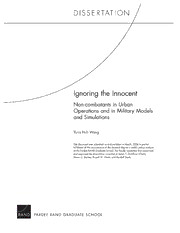
DTIC ADA487760: Ignoring the Innocent: Non-combatants in Urban Operations and in Military Models and Simulations

The Final Twist
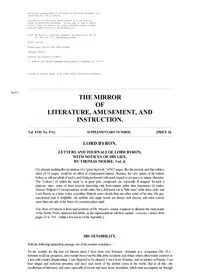
The Mirror of Literature Volume XVII No 474
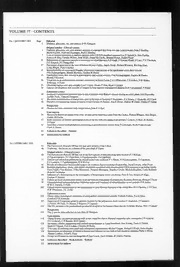
British Journal of Ophthalmology 1993: Vol 77 Table of Contents

Geochemistry at the Earth’s Surface: Movement of Chemical Elements
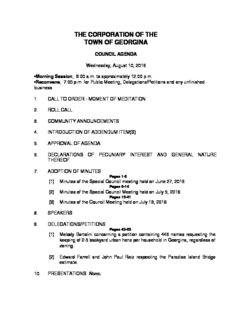
Allow Backyard Chickens In Georgina ON
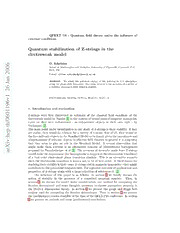
Quantum stabilization of Z-strings in the electroweak model
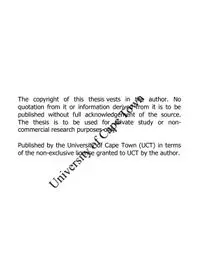
Towards a unity of ecology and ordinary ethics: On everyday life and aspirations to live sustainably
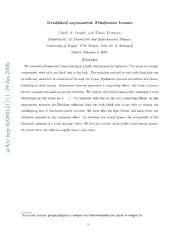
Irradiated asymmetric Friedmann branes

Journal of Geochemical Exploration 1993: Vol 48 Table of Contents
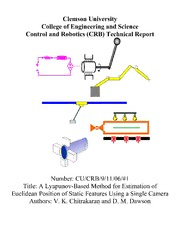
DTIC ADA462605: A Lyapunov-Based Method for Estimation of Euclidean Position of Static Features Using a Single Camera
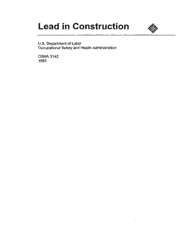
DTIC ADA400365: Lead in Construction

People and Mountains--Perspectives on the Human Dimension of Mountain Development

Canadian Adventist Messenger for 1998 - Vol. 67 - No. 02

Yachting Party by Fox B Holden



